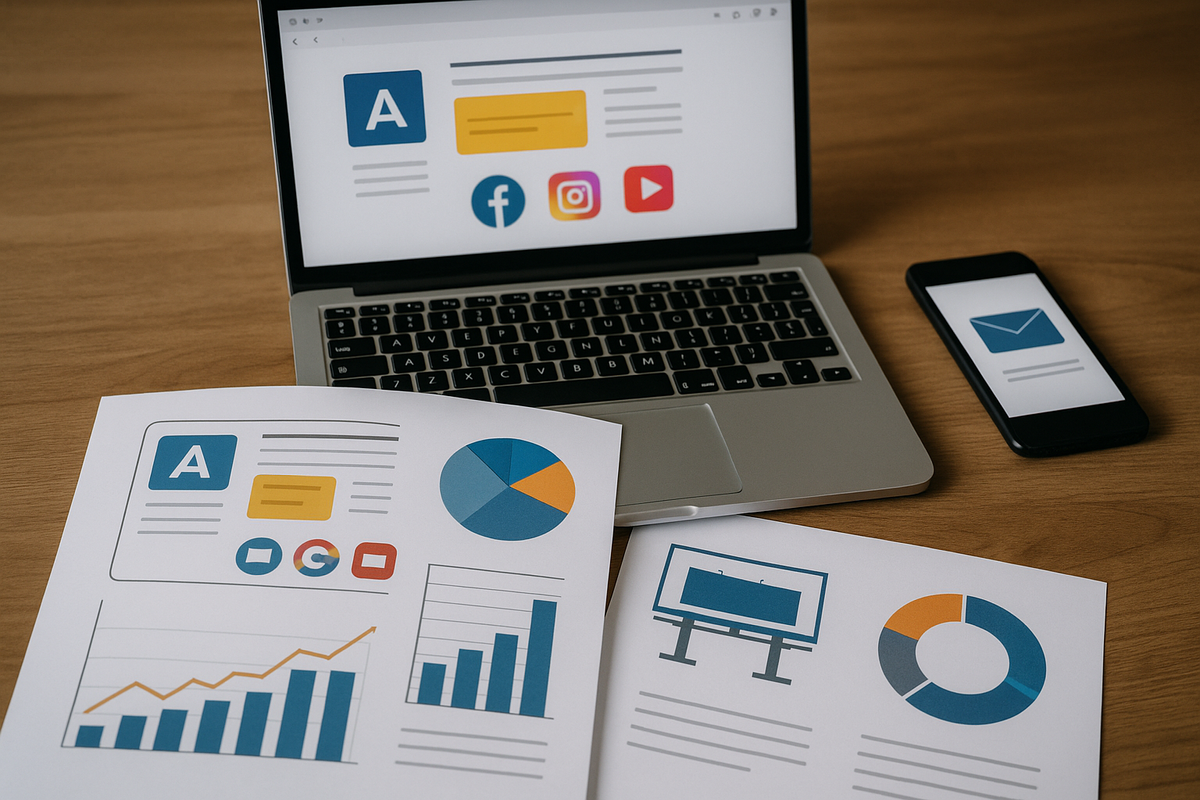
By Jenny Holly Hansen | WBN News | May 3, 2025
In today’s interconnected world, your audience isn’t confined to a single platform—they’re browsing websites, scrolling through social media, reading emails, and watching videos. To capture their attention and drive meaningful engagement, businesses must adopt multichannel advertising strategies. By leveraging multiple platforms and channels, you can amplify your message, reach diverse audiences, and create cohesive brand experiences.
Here’s how multichannel advertising works, its benefits, and how to execute it effectively.
What is Multichannel Advertising?
Multichannel advertising involves promoting your brand across various platforms and communication channels to engage with your audience wherever they are. These channels can include:
- Digital Channels: Social media, search engines, email marketing, display ads, and video content.
- Traditional Channels: Print media, television, radio, and outdoor advertising (e.g., billboards).
- In-Person Channels: Events, trade shows, and point-of-sale promotions.
A multichannel strategy ensures your message reaches customers at multiple touchpoints, enhancing visibility and engagement.
Benefits of Multichannel Advertising
1. Broader Reach
Each channel has its own unique audience. By advertising on multiple platforms, you can connect with a wider variety of people, ensuring your brand reaches different demographics and preferences. For example, a fitness brand targets younger audiences on Instagram and TikTok while using email marketing to engage older customers.
2. Enhanced Engagement
Audiences interact with content differently across channels. A well-rounded strategy ensures your message resonates by catering to their preferred formats, such as visual posts on Instagram or in-depth articles on LinkedIn. For example, a software company uses video tutorials on YouTube for education and retargeting ads on Facebook to drive conversions.
3. Consistent Brand Experience
A multichannel approach reinforces your brand identity by delivering a consistent message across touchpoints. This creates a seamless customer journey, building trust and recognition. for example, a restaurant chain runs print ads highlighting family meals, social media posts featuring menu updates, and outdoor billboards promoting locations.
4. Increased ROI
Using multiple channels allows you to optimize your ad spend by focusing on platforms that generate the best results while reducing investment in underperforming ones. For example, a retail brand finds Facebook ads drive the highest conversions and shifts a larger portion of its budget there while maintaining brand visibility on other platforms.
5. Diversified Risk
Relying on a single platform can be risky, especially if algorithm changes or audience shifts affect performance. Multichannel strategies mitigate this risk by spreading your efforts across various platforms.
Key Components of a Successful Multichannel Strategy
1. Know Your Audience
Understanding your target audience is the foundation of any advertising strategy. Identify their preferences, behaviors, and platforms they frequent to tailor your campaigns effectively. For example, a beauty brand targets Gen Z on TikTok with makeup tutorials while using Pinterest to reach millennials searching for beauty inspiration.
2. Choose the Right Channels
Not all channels will be equally effective for your brand. Focus on platforms that align with your audience and campaign goals. For example, a B2B company prioritizes LinkedIn for professional outreach while maintaining a blog to attract organic traffic.
3. Create Platform-Specific Content
Each platform has its own strengths and user expectations. Customize your content to suit the format and tone of each channel. For example, a travel agency uses stunning destination photos on Instagram, detailed travel guides on its website, and promotional videos on YouTube.
4. Maintain Consistent Branding
Ensure your visuals, messaging, and tone remain consistent across all channels to reinforce your brand identity. For example, a fashion retailer uses the same color palette, logo, and tagline in print ads, email campaigns, and social media posts.
5. Integrate Your Channels
Your channels should work together, not in isolation. Create campaigns that guide customers seamlessly from one platform to another. For example, an e-commerce store runs Instagram ads that direct users to a landing page with a discount code, followed by an email reminder to complete the purchase.
Tips for Optimizing Multichannel Advertising
- Use Data to Inform Decisions Monitor performance metrics on each platform to identify what’s working and what needs adjustment. Analytics tools like Google Analytics, Facebook Insights, and CRM software provide valuable insights.
- Test and Refine Run A/B tests on different channels to optimize your campaigns. Test variables like visuals, headlines, and call-to-actions (CTAs) to determine the most effective approach.
- Automate Where Possible Use automation tools to streamline processes like email marketing, ad scheduling, and audience segmentation. Platforms like HubSpot and Hootsuite can help manage campaigns across multiple channels.
- Retarget Your Audience Retargeting ensures consistent engagement with users who’ve interacted with your brand on one platform, encouraging them to complete their journey.
- Stay Updated on Trends Advertising trends evolve quickly. Stay informed about new platforms, features, and user behaviors to keep your strategy relevant.
Conclusion: The Multichannel Advantage
Multichannel advertising is no longer optional—it’s essential for brands aiming to thrive in a competitive marketplace. By reaching your audience across multiple touchpoints, creating tailored content, and delivering a consistent brand experience, you can maximize your impact and build lasting relationships with your customers.
A well-executed multichannel strategy ensures that your message doesn’t just reach your audience—it resonates with them, wherever they are. In the dynamic world of advertising, the more channels you master, the greater your opportunity for success.
Let’s Keep Talking:
Jenny is a business insurance broker with Waypoint Insurance.
She is also a business development consultant with Impresario Partners, helping Canadian Business expand overseas.
She can be reached at 604-317-6755 or jhansen@waypoint.ca. Connect with Jenny on LinkedIn at https://www.linkedin.com/in/jenny-holly-hansen-365b691b/. Connect with Jenny at BlueSky: https://bsky.app/profile/jennyhollyhansen.bsky.social
Let’s Meet Up:
Jenny Holly Hansen is a cohost with Chris Sturges of the Langley Impact Networking Group. You are welcome to join us on Thursday’s from 4pm to 6pm at: Sidebar Bar and Grill: 100b - 20018 83A Avenue, Langley, BC V2Y 3R4
TAGS: #Jenny Holly Hansen #Multichannel Advertising #Broader Reach #Enhanced Engagement #Consistant Brand Experience



